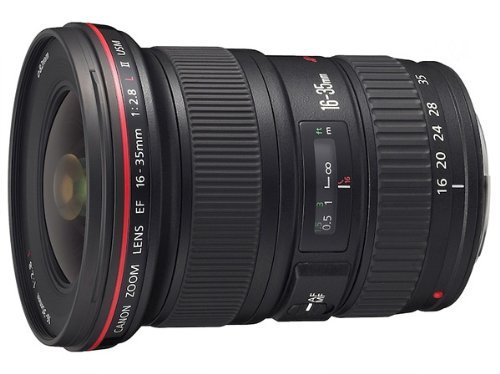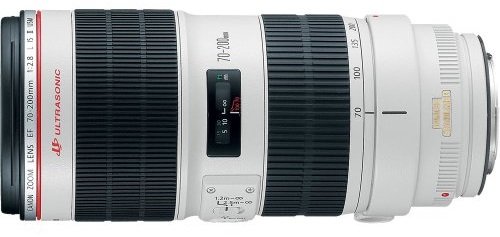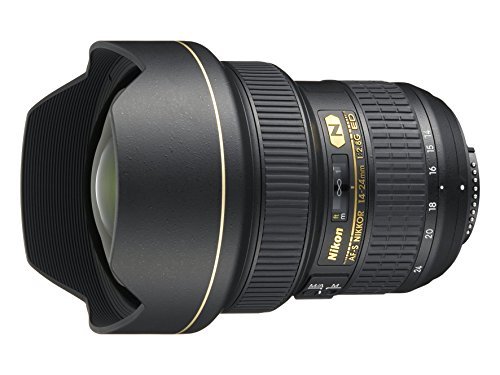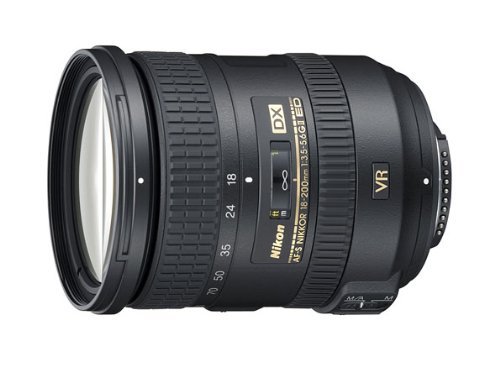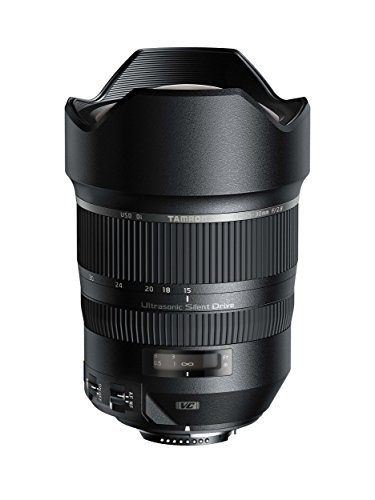In this article, we have reviewed the 10 best lens for architectural photography in the market along with a comparison table and a detailed buyer’s guide to help you choose the best lens possible for your needs.
You see those huge mountainous buildings while walking down the road or taking a drive? Of course, you would because it is impossible to ignore such gigantic creations.
Some of these buildings are crafted with an aesthetically pleasing exterior. It is impossible to get your eyes off these momentous infrastructures as they give off some great vibes upon sighting them.
Now it is expected that you’d want to capture some fascinating images of these amazing architectures, but taking images of these buildings isn’t a piece of cake. Though you can take your camera and grab one or two ordinary pictures anytime those will be just basic photos.
Architectural photography is an art in itself. It requires a lot of attention and a proper selection of lenses to catch some astounding, gratifying, and stunning images.
That’s why in today’s guide we will suggest your best lens for architectural photography which will let you capture images of buildings, monuments, architectures in enhanced quality.
10 Best Lens for Architectural Photography in 2025:
Best Canon Lens for Architectural Photography
1. Canon TS-E 90mm f/2.8 Tilt-Shift Lens
Making its way into the list is the Canon TS-E 90mm f/2.8 tilt-shift lens which is preliminary used for SLR cameras. You can expect to see a lot of Canon in this list since they’re quite popular in the field of architectural photography. This is the first-ever tilt-shift lens that was produced by Canon.
Now when we talk about the tilt-shift lens it has its own perks. Functionally it allows the user to focus manually where they can adjust the projections as per their requirement.
It gives a lot of freedom to the photographer in the essence of the varying angle of perspective. You can get your priorities first by using the tilt-shifting mechanism of Canon TS-E 90mm f/2.8.
The work of high-grade lenses is to propel the smallest details of images to a quality level and this lens is no exception. With it’s advanced focal, you can grab the tiniest detail into your photo that might seem impossible.
By capturing the smallest detail, you can rebrand your photo at a higher level and provide it with a better closure.
The stability of the lens is also admirable. While capturing a photo a little bit of disturbance might level down the quality of an image. But this lens makes sure factors that would cause physical interference to the lens are eliminated.
This is possible because of its tilt-locking mechanism which ensures that the position of the lens remains intact.
While you’re facing strong lighting conditions it is essential that you must adjust color and contrast to a required level. In this situation minimizing ghosting and flare also becomes a concern.
This problem can be easily overcome by the lens of Canon because of the super spectra coating that is applied over individual elements that control these factors.
One of the primary features of this lens is its workability with close-range buildings. Now everyone wants to take a longer shot but taking closer images at short distances is fun as well. With a focusing distance of 1.6’ and magnification of 1:3.4, you can now grab some nearer aspects of the buildings in precise detail.
The crispiness of image and retention of quality that this lens offers is impeccable. This is a deal you won’t be regretting.
- It offers a large focal length of 90mm.
- It uses a tilt-shift mechanism which lets you control the angle of focus.
- Getting handheld shots is possible.
- Can produce beautiful Bokeh.
- It offers huge versatility.
- Filter thread of 58mm which is smaller than other variants of the same type.
- You can’t change axes of tilt and shift independently.
- No presence of the automatic focusing system.
- Some problems are faced while taking wide-angle photos.
2. Canon TS-E 45mm f/2.8 Tilt-Shift Lens
Another lens by Canon with a tilt-shifting mechanism is the Canon TS-E 45mm f/2.8. It provides three degrees of freedom i.e. it can move in three different motions. You can rotate the movement of the lens up to 90 degrees about the lens axis, though you’d require some extra means to do it.
This mechanism gives you access to varying the position of the architect without having to go through the trouble of moving your camera. This is a pretty useful feature if you want to render the difficulty in capturing images.
Along with that it also provisions for wedge-shaped depth which is most desirable when carrying out architectural photography. A combination of tilt and swing is also possible via this lens by virtue of which you can adjust the orientation of your subject.
To do that, you have to reinstall the screws upon rotating the lens.
The rounded 8-blade diaphragm, that it offers is also responsible for providing a shallow depth of field. This aperture blade is useful when you want to pop up your subject when it is isolated in the background.
The proportion of the photo which is out of focus can be brought back into the image with the help of this feature. You can obtain much smoother and sharper bokeh with the help of the rounded diaphragm.
You can also automatically adjust the gaps between lens elements and focusing distance with the use of a floating optical system that this lens employs. Fluctuations of lens elements can also be limited by this optical system. The image aberrations at closer focal ranges are extensively eliminated with this mechanism.
The specialty of this lens can also be determined by its rear focusing system. This system enables faster autofocus by moving the diaphragm during the focusing phase. This effectively eliminates any changes in physical lengths that you may encounter while focusing.
Many professional architectural photographers have recommended this lens because of its accuracy in focus and its perspective control feature. Elimination of normal lens skew and blur are comprehensive feature of this product.
Taking close-up shots of some stunning apartments can now become fun if you use this lens. For the price, it proposes it is not a bad deal because, at the same time, it is offering staggering features.
- The tilt-shift mechanism is employed which can change the orientation f focus.
- It has an automatic aperture control system.
- Lighter in weight compared to other variants.
- Solid build quality.
- Ease in altering the depth of field.
- The lens is not zoomable.
- Problems are faced when focusing to infinity.
3. Canon EF 50mm f/1.4 USM lens
Canon sure is making a blast when it comes to camera lenses for architectural photography. So another introduction is Canon EF 50mm f/1.4 USM.
Extravagate and supreme lens for you if you’re looking to take some stunning shots of the building on a bright day. It is one of those Canon lenses which are reliable and durable, and you can use it for a much longer period of time without any issues.
A focal length of 50mm is employed with this length which can enhance the aesthetics of the image being captured. This gives you the ability to explore multiple options as you can capture images in a variety of modes.
With not too wide and not too telephoto, you can capture images at a good scale. In addition to that, it can also lessen the distortion and make images much sharper. Also, a shallow depth of view can be achieved which is preferable for architectural photography.
This lens proves a very handful in situations where light is low. This can be effectively used at night when buildings are glowing with lights.
Its f/1.4 aperture has the ability to gather more amount of light so that even in the dark, images don’t lose their essence, also it provides correct barrel, pincushion distortion, and chromatic aberration. It can also sustain heavy environments as its build quality is top-notch.
USM which refers to Ultrasonic autofocus motor as mentioned in its name is also a good addition to the lens. It is quieter in operation and provides faster focus.
Though this feature is mostly used for animal photography an aspect of faster focusing can be extensively used for taking some quick shots of the building. With a low speed and high torque, autofocusing becomes much easier. You can even focus manually.
Different types of aberrations can also be corrected through its molded glass aspherical lens elements. With the help of this, you can focus light at very high magnification. The aberrations can reduce including spherical and optical.
Overall it’s a very economical deal as you can’t find lenses with such richness at a comparatively minimum price and this is one of the best Canon has to offer.
If you are keen on getting some good shots of huge buildings then you should definitely get your hands on this.
- It offers resistance to dust and water.
- For its price, it provides stunning quality images.
- A shallow depth of field can be obtained.
- The best choice for beginners.
- Its price is lesser compared to other lenses.
- Its autofocus is very slow.
- It isn’t sharp like other lenses.
- Not really convenient for wide-angle pictures.
- Not useful in tight spaces.
4. Canon EF 16-35mm f/2.8L II USM Zoom Lens
If you have an appetite for taking images of some monumental buildings over larger distances then this lens by Canon can be pretty useful to you. Canon EF 16-35mm f/2.8 II USM Zoom Lens excels in capturing images of buildings at a longer range.
This L-series lens by Canon is very high performing when it comes to taking shots with wider angles. In addition, it is unaffected by water so you won’t have to worry about some rainy days.
It is used by many professional architectural photographers as its primary function is to provide edge-to-edge image quality which comes pretty handy for commercial work.
Three different types of precision aspherical lens elements are contained within this lens; they are ground, replica, and GMO. This deliberately further enhances image quality to a great extent and is much better than the original EF 16-35mm f/2.8L USM.
It has also the ability to correct background blurs with the help of a circular aperture it employs. It is very useful when you are capturing images at wider apertures.
You can also shift the focus of the object by moving the inner lens only with the use of its internal focusing system. It also produces ease in working with orientation-sensitive filters. You can also obtain much faster autofocusing in this lens compared to other lenses and newly employed autofocus algorithms propel the autofocusing to a new level.
With the non-linearity that it offers with focusing distances, you can get some adequate images of beautiful structures. Additionally, you can eliminate focus breathing, and change the magnification and angle of view by employing this feature.
Canon EF 16-35mm f/2.8L II lens can also be used for the full-size camera. So if you are thinking about purchasing EOS 5D or 6D, this can be pretty useful.
It also offers a diagonal angle of view ranging from 108 degrees to 63 degrees. The significance of this feature is that you can get images of buildings that are not symmetric in design at good quality. Adjustment of focus is also provisioned with full-time manual control.
You can vary your focus numerically in correspondence to the architecture. Compared to other lenses, this one is pretty light in weight so your mobility is greatly increased. You can carry it around anywhere without any hassles.
The large zooming range of this lens is something to look out for as it allows the user to get some ultra-wide focal length. So if you’re a fan of taking some pictures with wider angles, you should definitely get this product.
- It provides an ultra-wide zoom angle which is useful for taking wide-scale images.
- Resistance to water.
- Natural background blur at wider apertures.
- All-around crispy details in the image can be gathered along with reduced soft corners.
- At outer focus points, issues with locking are encountered.
- Sharpness is not as good as other lenses at the same price range.
5. Canon EF 70-200mm f/2.8L IS II USM Lens
When we are talking about some amazing lenses by Canon, you can’t miss out on Canon EF 70-200mm f/2.8L IS II USM Lens. It is astounding and fluid in nature as we speak and it has the capability of capturing detailed architectural images.
This superlative lens is used by many professionals as well as amateurs because of its ease in handling the elements of photography.
This lens provides crystal clear images that contain staggering details and great quality. With the use of the EF 70-200mm lens, you can maintain the stability of images via the telephoto zooming that it offers.
With the use of different architectural photography techniques, you can capture some in-depth photos of buildings as its aperture of f/2.8 offers a large amount of zooming range which makes your images much clearer and more accurate.
Its effect can also be seen while grabbing pictures from inconvenient angles as the voids will be compensated effectively. A bright amount of light can be gathered by this aperture which ultimately helps in adjusting the quality of light as per requirement.
Super Spectra coating is also applied to various elements of the lens. With this multi-layered anti-reflective coating, elements are prevented from any kind of foreign disturbances and you can capture smooth and optically optimized images.
By allowing maximum light to pass through the lens, it also minimizes the reflections.
The issue of color fringing can also be eliminated with the help of its elements. The problem of color fringing and chromatic aberration is usually encountered in architectural photography but fluorite and ultra-low dispersion elements completely eradicate them but adjusting the contrast to the required level.
With the help of this feature, you can get highly optimized and rendered images.
It also contains an optical image stabilizer which reduced the shaking of the camera. It also helps in reducing blurriness to a good extent. The problem of camera shake is faced when capturing images at a slow shutter speed which in turn causes frame jitter.
This frame jitter can extensively hamper the quality of images but now you no longer have to worry about it.
There is also a detachable and rotatable tripod collar which provides freedom in changing the position of the lens. You can work with it any environmental condition as the lens is packed and prevents dust and debris.
So ultimately this lens is pretty useful if you are going out on a long journey to capture some photographs of the building.
- Much cleaner images are obtained.
- It can capture images of objects which are far away from you without any degradation in quality.
- Can be extensively used for interior photography.
- It is dust and water-resistant.
- The speed of autofocus is very high.
- It is very heavy and bulky in size.
- In low light conditions, the lens becomes a bit inactive.
- Edge-to-edge sharpness is mediocre.
- The quality of the background blur is average.
Best Nikon Lens for Architectural Photography
1. Nikon PC–E FX NIKKOR 24mm f/3.5D ED Fixed Zoom
Canon isn’t the only one when it comes to providing outstanding lenses for architectural photography. Nikon has also immersed its hands into providing lenses in this field and some of its lenses have surpassed that of Canon.
Nikon PC- E FX is among some of the best Nikon lenses which are ideal for architectural photography. There are many features that this lens employs which makes it an ideal choice for architectural photography.
At the very first this lens offers a tilt-shift mechanism that enables the user to access different angles of projections as per their need. Though Canon TS-E 90mm f/2.8 also has a tilt-shift mechanism that separates Nikon PC-E FX from it is that it offers a much wider angle which is essential when taking pictures of large infrastructures.
This wide-angle view is desirable when it comes to architectural photography that’s why many experts in this field prefer this lens.
Its build quality and design are top notches. Made with tough material, it can resist shocks and vibrations to a great extent. Compared with other lenses, it is not that much bigger in size so carrying it around isn’t a big problem. Moreover, it is much lighter in weight and its workability is also top-notch.
It employs three extra-low dispersion glass elements that increase the sharpness of images along with the correction of color. Optical color defects and chromatic aberrations can also be eliminated by converging lights of different wavelengths at the same point which is what this feature basically does.
Nikon’s exclusive nano crystal coat is also used on this lens. This helps in preventing the reflections that might occur in internal reflective elements.
For the enhanced quality of color and brightness, it employs super-integrated coating which apparently reduces ghosting and flare which usually take place in backlit situations. You can get images with a good amount of contrast with optimum color balance.
The features that this lens offers are impeccable and unique on its own that’s why this lens is famous among architectural photographers. Though it is a bit expensive all of its perks make up for it.
- Its tilt-shift mechanism is pretty useful and convenient for architectural photography.
- Possible to get a close focusing range.
- Taking images at wider angles is easier with this lens.
- Elimination of internal reflection with the use of a Nanocrystal coat.
- Handheld photography is somehow difficult.
- Its price is skyrocketing high.
- Lens clarity is not up to its price.
- A falloff of sharpness at the edges can be seen.
2. Nikon 14-24mm f/2.8G ED AF Lens
Another trustworthy lens from Nikon is Nikon 14-24 f/2.8G ED. If you are looking to take some closer snaps of architects then this will be a great treat for you. Local and professional photographers use this lens for general photography as it is pretty convenient and handy.
With an aperture of f/2.8, it is very fast in its operation. It provides an ultra-wide-angle zoom which is desirable in case of grabbing images of taller architectures. With the very high-performance rate that this lens offers now you can have symmetric images of buildings in a linear manner.
The lens is coated with a Nanocrystal coat and on the outside, Nikon’s exclusive ED glass is provided. This protects the microelements of lenses from any disturbances and eliminates any deviations you might encounter while capturing images.
Issues of chromatic aberrations can also be effectively eliminated by using this lens with its two extra-low dispersion elements. This comes very handy when you are taking images at wider settings as too much frame can’t be covered which will likely cause distortion to the images.
When you are capturing images you won’t hear any sound at all. That’s because of Silent Wave Motor that Nikon has embedded in this lens. You can grab very precise and accurate images with the use of this feature along with enhanced autofocusing.
One of the best things about this lens is its focusing range as you can get up to 10.8 inches of focus at a 24mm setting which is very convenient when doing architectural photography. You can even interchange focus modes from auto to manual in regard to your requirement with the help of its extensive M/A focus mode.
Many images describing factors like sharpness, contrast, and color are corrected to a large extent by using this amazing lens by Nikon.
Maintaining the balance between these elements can be done without any extra work by capturing images through this lens. Just like previous lens ghosting and flare effects can also be reduced with Nikon’s Nanocrystal coat.
Compared with Nikon PC-E, it is much more rigid in construction which makes it suitable for challenging conditions. A good thing to notice is its price range as it is pretty low compared with some other lenses with somewhat similar features.
- Relatively faster aperture which results in high performance.
- Quieter in operation with the use of Silent Wave Motor.
- The feature of internal focusing is employed for retaining the focus range.
- Hard build quality with rigid construction.
- Good low light performance.
- Some substantial chromatic aberrations near the edges can be seen.
- Much heavier in weight.
- The maximum focal length is less compared to its other variants.
3. Nikon AF-S DX NIKKOR 10-24mm f/3.5-4.5G ED Zoom Lens
This is one of the cheapest lenses that Nikon has produced with some good built-in features. It is pretty low in price but doesn’t get carried away with it as there are some staggering features waiting for you that this lens proposes.
This lens is not only limited to exterior photography of architecture but with the help of this, you can also get some good shots of the interior as well. This lens is very compact and lighter in weight which is the cherry on the top considering all of its features.
If you are a beginner in this work then this is the right choice for you.
It offers huge versatility as you can focus your subject right up to 0.8ft. With the focal length of the 10-24mm DX format, it is an ideal choice for mounting on DSLR cameras. It can render the angle of the picture from 61 degrees to 109 degrees which is useful for taking images at wide angles.
You can get compelling and sublime images over huge distances with its enormous zooming range.
It comprises a silent wave motor whose primary function; technically speaking is to convert traveling waves into rotational energy which increases the speed of focusing and provides accurate and clear images.
Though this feature is also entrenched in other variants of Nikon and Canon thing is you’re getting it at a much cheaper rate, and that’s what makes this lens so startling.
This lens of Nikon offers an overwhelming dynamic range for taking pictures and enriches the color, contrast, and sharpness of the image to an appreciable magnitude. Though it is a bit slower in operation its wide-angle zoom compensates for the speed.
Sharpest edges can be generated along with minimal distortion and the definition of architectural images becomes flawless.
Since this lens is cheaper, its build quality isn’t that good so you are going to have to handle it more carefully. It is fragile in nature to protect it from falling or any impact as it may not sustain some damage.
- Considerably cheaper when compared to other Nikon lenses.
- Much lighter in weight.
- Fast, accurate, and quiet autofocus with the use of SWM.
- A good amount of contrast and color correction.
- A little distortion in images can be seen at 10mm in length.
- Since it is fragile in nature you have to handle it with care.
4. Nikon AF-S Nkr 18-200mm F/3.5-5.6G ED VR II
Another cheap lens by Nikon is Nikon AF-S Nkr 18-200mm F/3.5-5.6G ED VR II. Nikon gives some tough competition to Canon when it comes to price range.
They constantly produce lenses with splendid features and maintain the price at a minimum providing them with a slight edge over Canon. This lens is also among that group of Nikon.
One of the noticeable features of this lens is its VR II image stabilizer which reduces vibrations. It is useful when you are not using a tripod for capturing images. If you are using bare hands while taking shots of architecture, you might encounter some shakes and vibrations.
This can lead to distortion of images. But with the help of this lens, you can minimize those vibrations to a great amount which ultimately makes handheld photography possible.
Just like previous variants, it has extra-low dispersion elements for sharpening and color correction, aspherical lens elements for eliminating aberrations, and super-integrated coating for reducing ghost and flare effects. And the best thing is that the price is very low for all the features you are receiving along with it.
For correct frame capture, you can lock a particular frame at a required distance by use of a zoom lock switch. By doing so, you can secure a certain frame without losing an ounce of quality and capture the image with the correct amount of concentration.
Compared with NIKKOR 10-24mm, it offers much higher versatility. You can lengthen your image-capturing chances by its focus which can range up to 20 inches. You can also remove any undesirable light that is hampering the quality of the image by the flower-shaped lens hood that this lens encompasses.
This lens is most suitable when you are traveling far away. With its compactness and weight, you can easily carry it with you anywhere you want. A combination of fast autofocus and longer zooming is just a delightful function of this lens.
We all know no lens is perfect so you might face some problems of light fall-off, distortion and Bokeh but at the price you are getting it, there shouldn’t be any room for complaint.
- The vibration reduction system is used in this lens which helps in stabilizing the image.
- It can cover a wide range of focal lengths.
- Shutter speed can be broadly increased with compensation of camera shake.
- There is a little bit of barrel distortion.
- Vignetting is average when you use the filter.
Best Tamron Lens for Architectural Photography:
1. Tamron SP 15-30mm f/2.8 Di VC USD Wide-Angle Lens
This lens of Tamron is specially designed for Nikon cameras. Tamron has really shown great improvement over a period of time, learning from its predecessors, avoiding mistakes they’ve done in the past, and producing superior lenses.
Though it’s a bit heavy, bigger in size, and sharp, its features completely make up for that. Optical optimization in this lens is something to look for as it is a very important aspect of architectural photography.
Stabilization has become a necessity in this field of photography, though there is a small chance that you’d see any optical stabilization system in other popular lenses. Wide-angle photography requires stability in the image and you can achieve that by using this lens by Tamron.
With the zooming range of 15-30, you can get huge versatility in image capturing pertaining to various photography conditions. You can get some close-up shots of the nearest parts of architecture or some full-frame images with the full-frame scaling of this lens.
Different distortions and lateral color are also eliminated in this lens as the application of 18 elements take effect. These elements help in maintaining the quality of the image throughout the length without causing any deviation in quality and you can achieve photos with enhanced eminence.
The application of fluorine coating can also be seen in the lens which prevents water droplets or dirt to enter the system and contamination can be avoided.
A 9-bladed diaphragm enables the retention of image quality and delivers an ideal bokeh effect. For capturing much sharper images there is the facility of a vibration compensation system which is unique on its own.
For the larger zoom range, this is a very beneficial feature as you get discernible competence through it. This is mostly used for capturing images of architecture at night.
- It can cover a full frame of the image while shooting at wide angles.
- Uniform quality at every corner of the image can be achieved.
- The faster angle of view.
- The protective filter can’t be practically used.
- Some of the Nikon’s lenses offer somewhat similar features at the same price so it is a bit expensive.
Buyer’s Guide to Choose the Best Lens for Architectural Photography:
From the proposed lenses above we now understood how important role lenses play when it comes to architectural photography. But before buying them there are certain things you need to take notice of.
Architectural photography isn’t all about grabbing one or two images of buildings you sight, there is much more to it. That’s why you must take some factors into consideration before selecting your ideal lens.
Workability in low-light conditions
Architectural photography requires some shiny elements to the images that’s why it is mostly done in the day period. But the new trend of night photography of infrastructure has clearly made the mark in recent times, so you must select lenses that are capable of adjusting light even in darker conditions.
With the help of good lighting, you can represent the images in a much brighter way which is essentially required in this case.
Use a lens with wider angles
Buildings are huge, and that’s why capturing everything at once is an impossible task. That’s where wider angles play the role. At the closest range, you can gather every bit of frame of the building within your camera by using wider-angle lenses. Some buildings are tall; some buildings are wider, though wide angles are helpful in both cases.
That’s why you must select a lens that offers wide angles for capturing images. Although using too wider angles also result in some cons. One of the prominent is the distortion caused by these lenses. It is usually seen in the case of a 16mm lens for close-range shooting.
According to your ability, you can select the desirable lenses which are balanced in every aspect.
Tilt Shift mechanism
Capturing images of the tallest buildings is a really difficult task but lenses with tilt-shift mechanisms are capable of overcoming that difficulty. As already mentioned above, the tilt-shift mechanism helps in maintaining linearity in any of the angles.
There is no way you are going to face any kind of distortion while using a tilt-shift mechanism which usually occurs while capturing images of huge buildings.
Whenever you are getting shot of high towers from the feet of its pillar you are likely to miss out on some frame due to its momentous height, but the tilt-shift mechanism offers great projection that covers every frame without causing any disturbance to the image.
With the combination of all of these, you should consider your lens. Though it also depends on what your level of photography is, whether you’re an amateur or a pro.
Final Verdict
Wider angles seem like a must requirement for lenses so Canon TS-E 90mm f/2.8 Tilt-Shift Lens can be an ideal choice for you though it is a bit expensive.
If you are tight on budget, you should always go for Nikon AF-S DX NIKKOR 10-24mm f/3.5-4.5G ED Zoom Lens, but if you want some additional features then Canon has some amazing lenses to offer.



